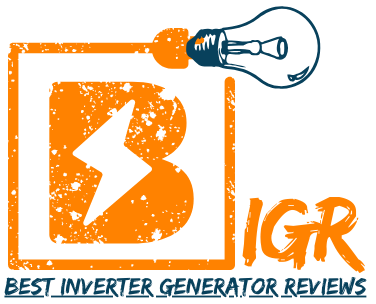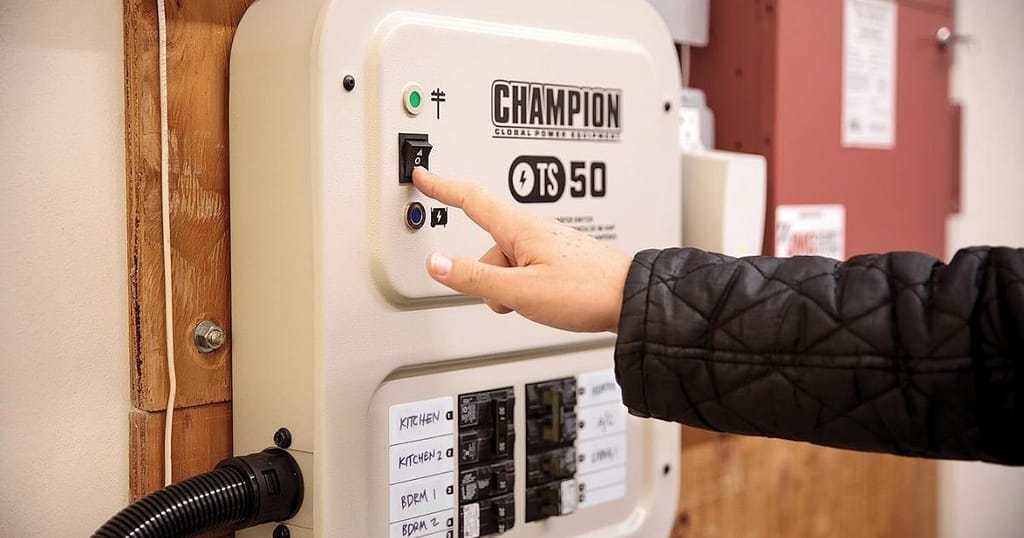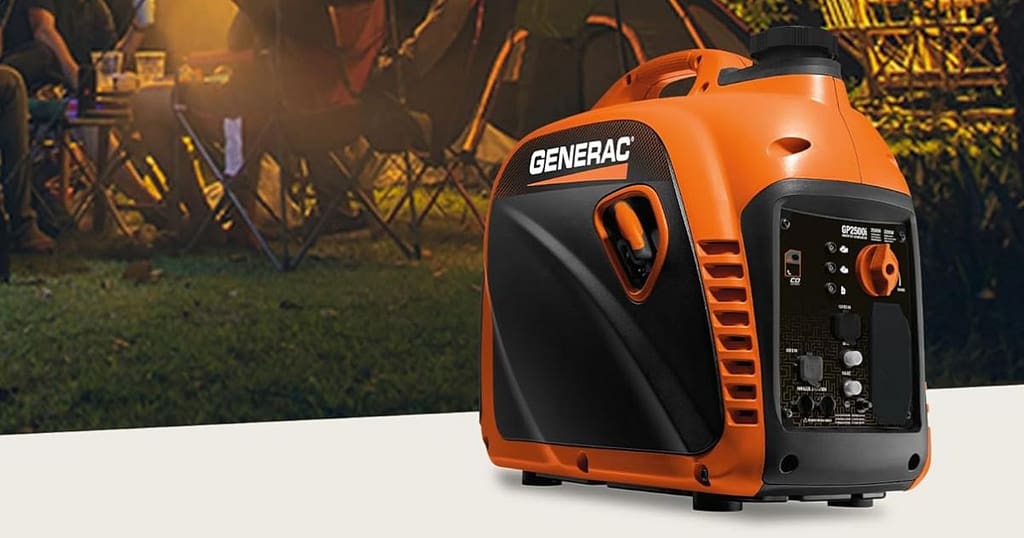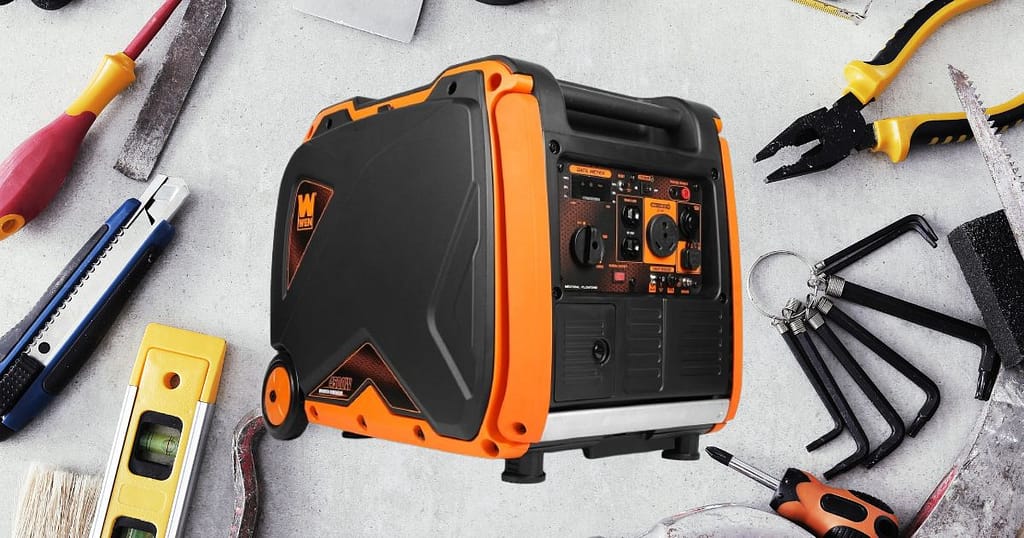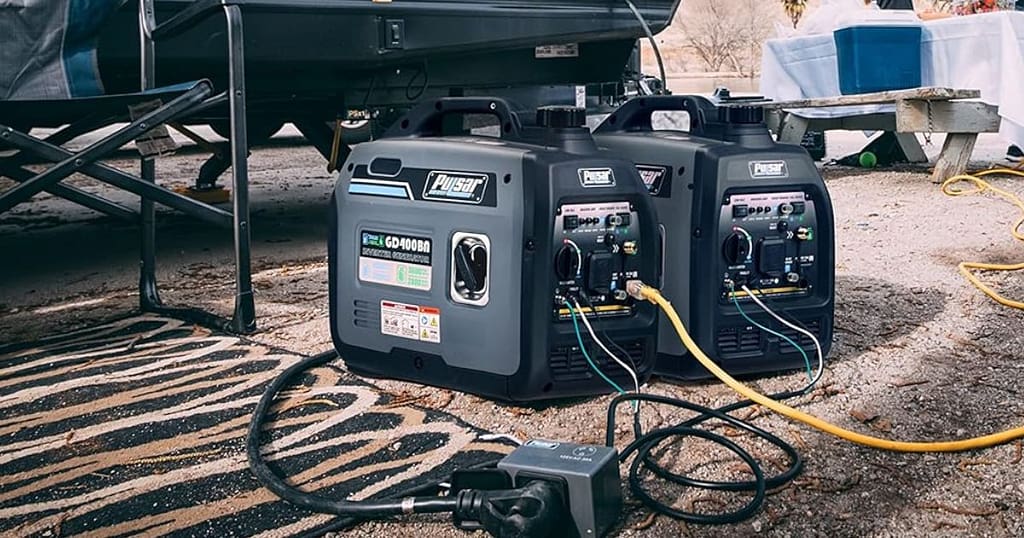In today’s world, where power outages can occur unexpectedly due to various reasons, having a reliable backup power system is crucial. A transfer switch is essential to any backup power system, as it enables a seamless transition from the main power supply to a backup generator during outages. In this comprehensive guide, we will walk you through the process of installing a 50-amp transfer switch in your home, ensuring a safe and efficient setup for an uninterrupted power supply.
Before You Begin: Preliminary Steps
Assess Your Power Requirements: Before installing a transfer switch, evaluate your power needs to determine the appropriate size of the transfer switch. A 50-amp transfer switch is suitable for powering essential circuits in your home.
Select the Right Generator: Ensure that your backup generator can provide at least 50 amps of power output to match the capacity of the transfer switch.
Choose an Installation Location: Identify a suitable location for the transfer switch near your main electrical panel and the backup generator. The area should be well-ventilated and easily accessible.
Obtain Necessary Permits: Check with your local authorities to determine whether you need any permits for electrical work. Compliance with local codes and regulations is essential to ensure safety.
Installation Steps
Step 1: Safety First
Always prioritize safety during the installation process. Turn off the main power supply to your home at the circuit breaker and use appropriate personal protective equipment (PPE), including safety glasses and gloves.
Step 2: Mount the Transfer Switch
- Choose a sturdy wall to mount the transfer switch. Ensure that the location allows for proper clearances as specified in the manufacturer’s instructions.
- Use a level to make sure the transfer switch is mounted evenly.
Step 3: Connect the Transfer Switch to the Main Electrical Panel
- Open the main electrical panel and locate the circuits you want to connect to the transfer switch. These are usually essential circuits like lights, refrigerators, and heating systems.
- Carefully follow the manufacturer’s instructions to connect the transfer switch wires to the designated circuit breakers in the panel.
Step 4: Connect the Generator
- Install a weatherproof generator inlet box on an exterior wall close to the generator. This allows you to connect the generator to the transfer switch using a generator cord.
- Run a suitable electrical conduit from the generator inlet box to the transfer switch location.
- Follow the manufacturer’s guidelines to wire the generator cord and the transfer switch’s wiring for the generator connection.
Step 5: Complete the Wiring
- Follow the manufacturer’s wiring diagram to connect the transfer switch to the main electrical panel and the generator.
- Double-check all connections to ensure they are secure and properly insulated.
Step 6: Test the System
- Turn the main power supply back on at the circuit breaker.
- Start the generator and activate the transfer switch to ensure a smooth transition from the main power supply to the backup generator.
- Test the connected circuits to verify that they receive power from the generator.
Step 7: Finalize the Installation
- Secure all wiring and connections in the transfer switch enclosure.
- Label the transfer switch and circuit breakers clearly to indicate which circuits the generator powers.
- If required by local regulations, schedule an inspection to ensure the installation complies with electrical codes.
Conclusion
Installing a 50-amp transfer switch in your home is a practical way to ensure an uninterrupted power supply during outages. You can create a safe and efficient backup power system by following this comprehensive guide and adhering to manufacturer instructions and local codes. Remember that electrical work can be complex, and if you are not comfortable with the installation process, it’s always advisable to seek assistance from a qualified electrician to ensure the safety and reliability of your backup power setup.
The Importance of a 50-Amp Transfer Switch in Residential Electrical Systems
A 50-amp transfer switch is a crucial component in home electrical systems, especially for households with high-power appliances or electrical demands. This device plays a critical role in ensuring the safe and efficient operation of backup power systems, such as generators, during power outages or disruptions. Below is a comprehensive explanation of the importance of a 50-amp transfer switch in residential electrical systems:
Power Management during Outages: A 50-amp transfer switch serves as a link between the main electrical panel of the house and an auxiliary power source, such as a backup generator. During a power outage, the transfer switch detects the loss of utility power and automatically switches the load from the main power supply to the backup generator. This seamless transition prevents interruptions to critical appliances and systems, ensuring continued functionality and comfort in the household.
Appliance and System Support: Homes with high-power appliances like air conditioners, electric stoves, electric water heaters, and heating systems have greater electrical demands. During an outage, these appliances require substantial power to function properly.
A 50-amp transfer switch can handle the higher electrical loads generated by such appliances, ensuring that they receive the necessary power supply from the backup generator. This prevents overloading the generator and maintains the performance of these appliances.
Load Prioritization: Transfer switches often come with load prioritization capabilities. In a scenario where the backup generator’s capacity may be insufficient to power all the home’s electrical loads simultaneously, the transfer switch allows homeowners to prioritize which circuits or appliances receive power. Critical systems like medical equipment, refrigeration, and lighting can be given precedence, ensuring the household’s safety and functionality during an outage.
Electrical Safety: A 50-amp transfer switch enhances the safety of both residents and utility workers. When utility power is restored after an outage, the transfer switch ensures that the generator is disconnected from the main electrical grid before the utility power flows back. This prevents the dangerous phenomenon known as “backfeeding,” where generator power could flow into the grid and pose a risk to workers repairing the lines.
Simplified Operation: Manual methods of switching between utility and generator power can be complex, time-consuming, and potentially unsafe. A 50-amp transfer switch automates this process, eliminating the need for homeowners to physically connect and disconnect the generator. This simplicity makes backup power accessible to a wider range of individuals, even those without extensive electrical knowledge.
Prevents Overloading: In households with high-power appliances, attempting to power them all simultaneously using a backup generator with limited capacity can lead to overloading. This can damage the generator and the appliances, leading to costly repairs. The 50-amp transfer switch prevents this scenario by managing the distribution of power to the connected appliances based on their electrical requirements.
Manual vs. Automatic 50-Amp Transfer Switches: A Comparative Analysis
Transfer switches play a crucial role in providing a safe and reliable transition of power supply between the main utility and backup power sources, such as generators. In scenarios where a 50-amp electrical service is involved, the choice between manual and automatic transfer switches becomes essential. Both options have their advantages and disadvantages, and the suitability of each depends on specific requirements and scenarios.
Manual 50-Amp Transfer Switches:
Pros:
Simplicity and Reliability: Manual transfer switches are relatively straightforward in design and operation. They consist of a basic mechanical mechanism that allows users to manually switch between utility and generator power sources. This simplicity often results in increased reliability, as there are fewer components that could potentially fail.
Lower Cost: Manual transfer switches are generally more cost-effective compared to their automatic counterparts. This makes them an attractive option for budget-conscious individuals or scenarios where a backup power solution is needed without significant investment.
Maintenance: Due to their simpler design, manual transfer switches typically require less maintenance and are easier to troubleshoot in case of issues. This can be advantageous for individuals with basic electrical knowledge.
Cons:
Human Intervention Required: The most significant drawback of manual transfer switches is the need for human intervention. When a power outage occurs, someone must be present to initiate the switch from utility to generator power. This can be inconvenient, especially in situations where no one is available to perform the switch.
Delayed Response: As manual switches require human intervention, there can be a delay in restoring power to critical systems during an outage. This delay could lead to disruptions in operations or potential damage to sensitive equipment.
Automatic 50-Amp Transfer Switches:
Pros:
Seamless Transition: Automatic transfer switches are designed to sense power outages and switch to the backup generator source without any human intervention. This seamless transition ensures that critical systems receive power promptly, reducing downtime and potential losses.
Convenience: The automatic operation of these switches eliminates the need for someone to be physically present during power outages. This is particularly beneficial for scenarios where the property is unoccupied or when immediate power restoration is essential.
Precise Load Management: Many automatic transfer switches are equipped with advanced features like load shedding. This means they can prioritize which electrical circuits or systems receive power, preventing overload on the generator and ensuring essential devices remain operational.
Cons:
Complexity and Cost: Automatic transfer switches are more intricate in design and installation, which can lead to higher upfront costs. Additionally, the added complexity could potentially result in more maintenance requirements and a higher likelihood of technical issues.
Dependency on Electronics: The reliance on electronic components for automatic operation can introduce a vulnerability. Power surges, electronic failures, or compatibility issues could impact the switch’s functionality.
Scenarios and Suitability:
Manual Transfer Switches: These are suitable for scenarios where cost is a primary concern, and where regular maintenance or troubleshooting can be managed easily. They might be a good choice for occasional use in residential settings or small businesses that can tolerate a brief delay in power restoration.
Automatic Transfer Switches: These are ideal for situations where uninterrupted power supply is critical. Examples include medical facilities, data centers, large commercial spaces, and homes with occupants who cannot afford power interruptions. They are also preferable when the property is unattended for extended periods, as they ensure automatic response to outages.
My Verdict
The choice between manual and automatic 50-amp transfer switches depends on factors such as budget, the importance of uninterrupted power, the complexity of the electrical system, and the level of technical expertise available for maintenance. Evaluating these factors will help determine the most suitable option for a given scenario.
What is the difference between a 50 amp and a 30 amp transfer switch?
In an increasingly interconnected world, uninterrupted power supply is crucial for both homes and businesses. Backup power systems, often incorporating transfer switches, play a vital role in ensuring seamless transitions from the main power source to a backup generator during outages. When considering a transfer switch, understanding the differences between various options, such as the 50-amp and 30-amp variants, is essential for making an informed decision. Here, we delve into the distinctions between these two types of transfer switches to help you choose the one that best suits your backup power needs.
Understanding Transfer Switch Ratings
Before diving into the differences, it’s important to understand what the amp rating of a transfer switch signifies. The amp rating indicates the maximum current that the transfer switch can handle. It is a critical factor in determining the electrical load that can be safely connected to the transfer switch.
Comparing 50-Amp and 30-Amp Transfer Switches
1. Electrical Load Capacity:
50-Amp Transfer Switch: A 50-amp transfer switch is designed to handle higher electrical loads. This makes it suitable for powering a wider range of appliances and circuits during power outages. It can accommodate more power-intensive devices, such as air conditioning systems, water heaters, and larger appliances.
30-Amp Transfer Switch: On the other hand, a 30-amp transfer switch has a lower electrical load capacity. It is best suited for powering essential circuits such as lighting, refrigeration, and basic electronics. While it may not support high-power devices, it can still provide adequate backup power for critical functions.
2. Generator Compatibility:
50-Amp Transfer Switch: A 50-amp transfer switch requires a generator with a higher output capacity to fully utilize its potential. This type of transfer switch is commonly used in larger homes, businesses, or facilities where a significant amount of power is needed during outages.
30-Amp Transfer Switch: A 30-amp transfer switch is compatible with generators that have a lower power output. This makes it a suitable choice for smaller residences and locations with lower power requirements.
3. Installation Considerations:
50-Amp Transfer Switch: Due to its higher capacity, a 50-amp transfer switch installation may require more complex electrical work and potentially a larger generator. This could result in higher installation costs and may necessitate the expertise of a professional electrician.
30-Amp Transfer Switch: The installation of a 30-amp transfer switch is generally less complex and may be more budget-friendly. It may also be a more feasible DIY project for individuals with basic electrical knowledge.
4. Cost:
50-Amp Transfer Switch: The cost of a 50-amp transfer switch is typically higher than that of a 30-amp transfer switch. Additionally, the associated generator and installation costs can be higher due to the increased power requirements.
30-Amp Transfer Switch: A 30-amp transfer switch, along with a compatible generator and installation, is generally more affordable.
Conclusion
When choosing between a 50-amp and a 30-amp transfer switch, the decision should be based on your specific backup power needs. A 50-amp transfer switch offers higher capacity and is suitable for larger homes and businesses requiring more power. On the other hand, a 30-amp transfer switch is ideal for smaller residences and locations with essential power needs. Consider factors such as the size of your property, the appliances you wish to power, and your budget. Regardless of your choice, it’s important to ensure that the transfer switch and generator are installed correctly and in compliance with local electrical codes to guarantee a reliable backup power solution. If you’re uncertain about the selection or installation process, consulting with a professional electrician can help you make an informed decision tailored to your specific requirements.
Is 30amp the same as 50amp in installation?
30-Amp Installation: A 30-amp electrical installation refers to a circuit capable of carrying up to 30 amperes of electrical current. This level of current is suitable for many household appliances and devices, such as smaller air conditioning units, refrigerators, microwaves, and general lighting. In the context of residential wiring, a 30-amp circuit is typically used for lower-demand areas or appliances.
50-Amp Installation: A 50-amp electrical installation, on the other hand, is designed to handle up to 50 amperes of electrical current. This higher capacity makes it suitable for more power-hungry appliances and equipment, such as larger air conditioning units, electric stoves, electric water heaters, and even some types of RVs or electric vehicle charging stations.
Key Differences:
Current Capacity: As mentioned, the primary difference between a 30-amp and a 50-amp installation is their capacity to handle electrical current. A 50-amp circuit can carry significantly more power than a 30-amp circuit, making it suitable for more demanding appliances.
Wire Size and Components: Due to the higher current capacity of a 50-amp circuit, it requires larger wire sizes and potentially heavier-duty components such as outlets, circuit breakers, and connectors. These components are designed to handle the increased load safely and prevent overheating.
Appliance Compatibility: The choice between a 30-amp and a 50-amp installation depends on the electrical requirements of the appliances you intend to connect. It’s essential to match the circuit capacity to the total load of the appliances to ensure safe operation without overloading the circuit.
Installation Difficulty and Cost: Generally, installing a 50-amp circuit can be more complex and potentially more costly compared to a 30-amp circuit. The larger wire size and more robust components can require more effort during installation.
Code Requirements: Electrical codes and regulations may dictate specific requirements for wiring, circuit protection, and outlets based on the current capacity. It’s crucial to adhere to these codes to ensure safety and compliance.
In summary, the choice between a 30-amp and a 50-amp installation depends on the electrical demands of the appliances you plan to connect. If you’re unsure about the appropriate capacity for your needs, it’s advisable to consult with a licensed electrician. They can assess your requirements, determine the right circuit capacity, and ensure a safe and compliant installation.
